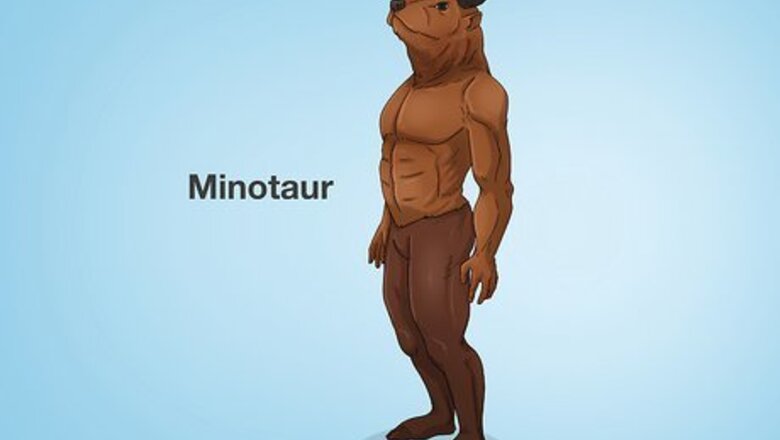
views
- The Minotaur was a mythological monster with the head of a bull and the body of a man.
- Centaurs had the upper half of a man and lower body of a horse, and they were their own race.
- The Minotaur is well-known as the monster Theseus slayed in the Labyrinth to save the people of Athens.
- The centaurs were regarded as brutish and barbaric, and are famous for their battle with the Lapiths.
Appearance

The Minotaur was half-man half-bull. The Minotaur was a monster easily recognized in Greek mythology for having the body of a man and the head of a bull. There was only one Minotaur in all of Greek mythology, and it was killed by the hero Theseus.
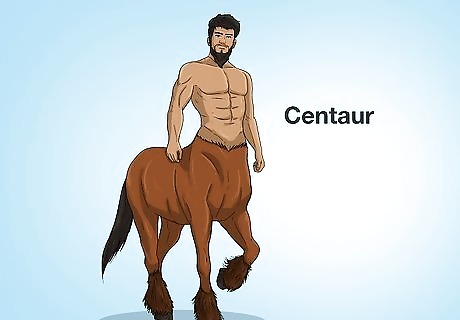
Centaurs were half-man half-horse. They were creatures with the upper half of a man and the lower half of a horse. They made up their own race and lived in groups. Centaurs also had a female counterpart called Centuridae or Centauresses. They had the upper half of a woman and the lower half of a horse.
Origin
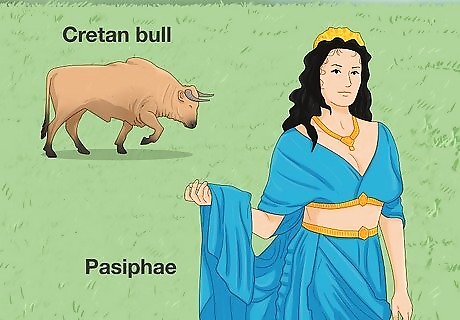
The Minotaur was the son of Pasiphae and the Cretan Bull. According to Greek mythology, Poseidon, the god of the sea, made King Minos’ wife Pasiphae fall in love with a bull. The snow-white bull was a gift from Poseidon and was meant to be sacrificed by King Minos to the god of the sea. But the king found the bull too beautiful to be slaughtered and so used a different one in its place. To get his revenge, Poseidon made Pasiphae fall in love with the bull, and she gave birth to the Minotaur. The Minotaur’s birth name was Asterius, named after his grandfather, the King of Crete. The name “Minotaur” is a combination of “Mino,” as in Minos, and “taur” meaning “bull.”

Centaurs are the offspring of Centaurus and the Magnesian mares. Centaurus was born from Ixion and Nephele, a cloud that Zeus had made to look like his wife Hera, who he thought Ixion was falling in love with. Ixion fell for the trap, and his son Centaurus was born. Centaurus then went on to mate with the Magnesian mares, thus giving birth to the race of the centaur. Another origin story of the centaurs claims that they were actually the descendents of Apollo, god of the sun. Apollo and the river nymph Stilbe gave birth to Lapithes and Centaurus. Lapithes went on to found the Laptih race, while Centaurus mated with mares to create the centaurs.
Disposition
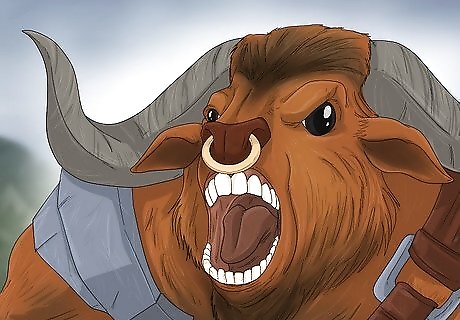
The Minotaur was a violent beast that feasted on human flesh. Wanting to hide his monstrosity away, King Minos had the inventor Daedalus create an elaborate labyrinth to house the Minotaur. The creature was incredibly violent and feasted on a diet that consisted solely of human flesh. The Minotaur was more beast than human, and was greatly feared by the residents of Athens.
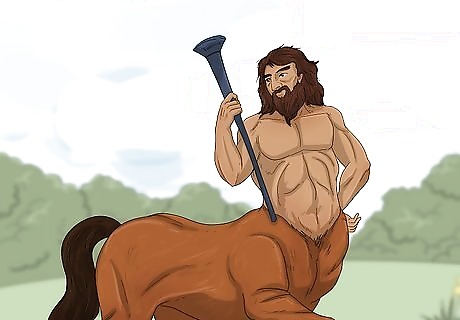
Centaurs were more human-like and ate the same food as humans. For the most part, the centaurs lived in the forests around Mount Pelion in Thessaly. They were mischievous, loved violence, and were generally not favorably viewed by locals. They tended to give in to their more animalistic side, but still had the capability to converse and think. They also lived off of normal human food and, being followers of the wine god Dionysus, weren’t opposed to a good glass of wine. The centaur Chiron was the only exception to the brutish image centaurs were given, and he was dubbed “the most righteous of Centaurs” by Homer. He was one of the wisest beings in Greek mythology and the teacher of many famous heroes, including Achilles, Hercules, Perseus, and Theseus.
Legendary Battles

The Minotaur’s battle with Theseus is one of the most famous Greek myths. King Minos blamed the Athenians for the death of his only son, Androgeos, believing that the King of Athens to be behind his son’s death. As repayment, the people of Athens would send 14 youth—7 young men and 7 women—every year into the Labyrinth to be fed to the Minotaur as a sacrifice to King Minos. Wanting to end his people’s suffering, the hero Theseus eventually ventured into the Labyrinth and slayed the Minotaur. Some retellings of the story say that the 14 sacrifices were sent every 9 years instead of once a year.

Centaurs are famous for their conflict with the Lapiths. This battle was known as the Centauromachy. The story goes that the centaurs were invited to the wedding of King Pirithous of the Lapiths and Hippodameia. The centaur guests got a bit inebriated from drinking slightly too much wine, and one of them, Eurytion, attempted to ride off with the bride. Thus, a huge battle between the Lapiths and centaurs took place, with the Lapiths claiming victory and driving the centaurs off their lands.
Depictions in Art
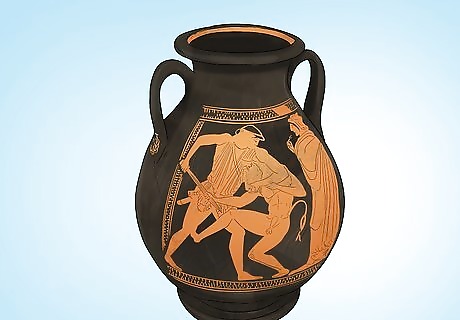
The battle between Theseus and the Minotaur is on many pottery pieces. From drinking cups to vases, many artists from Ancient Greece depicted Theseus’ slaying of the Minotaur, proving how important of a legend this was to the people of Greece. From as early as 1450 BCE, the Minotaur has been a central figure in many artists’ work, including George Frederic Watts’ “The Minotaur” (1885) and Pablo Picasso’s “Minotauromachy” (1935).
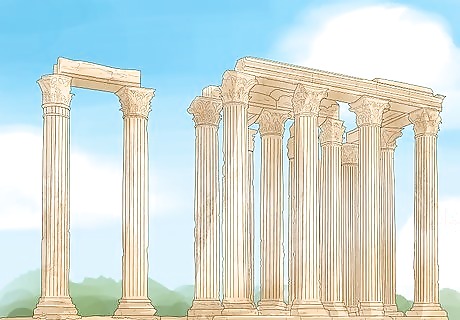
The centaurs can be seen depicted in various temples in Greece. Their most notable appearances are in the Temple of Apollo at Bassae, the Temple of Zeus at Olympia, the Temple of Hephaestus, and the infamous Parthenon. They are often depicted as enemies of the Greek people, represented in these places alongside other enemies such as the Amazons, the Giants, and the Trojans.
Other Composite Mythical Creatures

The satyr was a man with goat-like features. They’re also connected with the worship of the god of wine Dionysus and are described as being fond of wine, dancing, music, and chasing after nymphs. Satyrs were described as being men with goat or ram-like features, including horns, hooves, and tails.
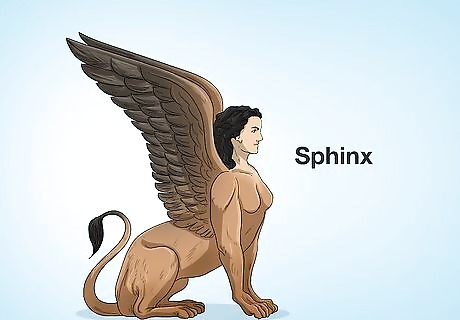
The Sphinx was a creature with the head of a woman and body of a lion. In Greek mythology, the sphinx was an aggressive creature with the head of a woman, body of a lion, wings of an eagle, and the tail of a serpent in some renditions. The Sphinx would ask a riddle to humans who passed by. If they answered incorrectly, the Sphinx would eat them. The riddle went, “What animal is that which in the morning goes on four feet, at noon on two, and in the evening upon three?” with the answer being “Man.”

Echidna was the half-woman half-snake creature in Greek mythology. Echidna was known as the mother of monsters in Greek mythology, having birthed some of the most ferocious monsters that waged battles against famous heroes. These monsters included Orthurs, Ladon, Cerberus, and the Lernaean Hydra. Echidna was a monster with the upper body of a woman and a lower half that was a double serpent’s tail.

















Comments
0 comment